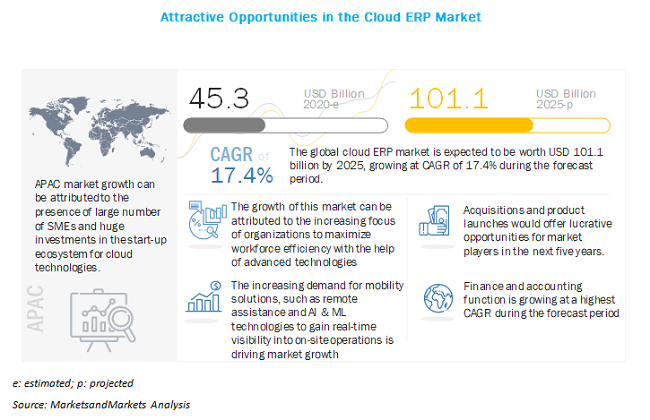New York, February 18, 2022 (GLOBE NEWSWIRE) – Reportlinker.com announces release of report “Global Managed Services Market – Growth, Trends, Impact of COVID-19, and Forecasts (2022 – 2027)” – https: // / www.reportlinker.com/p06231635/?utm_source=GNW 44% over the period 2022-2027 (hereinafter referred to as the forecast period). SMBs are expected to be the driving factors that have a positive impact on market growth, as more and more SMBs seek to outsource non-core activities. According to Datto, on average, BPA reports a client base of 122 clients, and about 60% of BPA clients have between 1-150 employees; also, only 5% of BPA reported having clients with over 500 employees.
Key Highlights Managed services offer a variety of benefits that have proven to have a positive impact on the development of the organization that accepts such services because they can focus on their core expertise. The successful deployment of managed services is estimated to help reduce the cost of IT by 25-45% and also increase operational efficiency by 45-65%. In addition, 25% of organizations reported that downtime costs averaged between USD 301,000 and USD 400,000 per hour (source: Intelligent Technical Solutions). In addition, the entire year 2022 will be about deploying applications to match the pace of development. The application maintenance and support services will be critical for the IT management services. Application performance monitoring (APM), for example, will provide a quick feedback mechanism for developers. Initial monitoring (for studying user behavior), ADTD (for application discovery, tracking and diagnostics), and AIOps analytics (for detecting application lifecycle patterns and anomalies) will all be part of APM. These solutions will help the DevOps team better analyze business problems. It will cut down on their average repair time (MTTR). With industry needs, standards, and consumer needs changing day by day, businesses are now looking for results – based results. They claim to have clearly documented, in real time, predefined or expected criteria. The MSP will now be seen using advanced analytics and reporting to present the impact of applied technologies and present factual data. In addition, the Blockchain and IoT technologies are set to open up more opportunities s better for the managed service providers, because these organizations need expertise to implement these technologies. To seize these opportunities and stay relevant and keep up with the competition, the managed service providers are acquiring more essential skills for these, among other innovative technologies, such as AR, VR, and AI. Since the inception of COVID-19, the demand for cloud-based solutions has grown significantly due to enterprise-adopted remote working models. As more IT decision – makers want to take advantage of modern cloud environments, they are embarking on longer project runways and needing bigger budgets. In fact, almost half (48%) of US and UK IT decision-makers say that the average time taken to successfully complete the transition of a single multi-cloud application is 1-2 months (source: Wanclouds).
Manufacturing is expected to have a significant Market Share
In the current technology-led business environment, big data is one of the key drivers of manufacturers’ productivity and efficiency. With the high adoption rate of sensors and connected devices and M2M communication enablement, the data points generated in the manufacturing industry have increased tremendously. Industries are struggling to move to a “smart industry,” where data generation and visualization can be real-time. From descriptive to predictive, the evolution of analytics has informed the industry about the potential benefits of this amount of data. The motto of the manufacturing industry is moving towards a metrics-based industry, which can improve decision-making based on the use of data-driven statistics. With the concept of Industry 4.0 affecting production establishments in the manufacturing industry, the amount of data produced from the manufacturing industry has fallen snow, because they were able to create data from all process points, varying from temperature, pressure, moisture, stress, pressure. , and quality, among many others. There are several applications in the field of semiconductors, consumer electronics, and the automotive industry, where manufacturers have to monitor multiple variables to ensure end product quality, where big data analytics has emerged as an effective solution to the traditional methods. As most small and medium manufacturing industries are increasingly focused on hardware equipment and lack expertise in software solutions, they are outsourcing these big data analytics solutions. Their spending is being further reduced by outsourcing software services. This would add to the trend in sourcing other software services field services, such as field service management and ERP, with management services during the forecast period.
Asia Pacific is expected to be the fastest growing market
Digital transformation is now a top priority in the country and moving at a rapid pace, as more and more companies are implementing formal strategies to support their efforts. In January 2021, the Chinese State Council issued a proposal to help the digital economy flourish for the duration of the 14th Five-Year Plan (2021-2025). According to the plan, the digital transformation of China’s industry will reach a new level by 2025, and public services will be more comprehensive, and the governance structure of the digital economy will be visibly improved. Managed service providers in China are focused on reducing security risks and optimizing operations for end users by keeping up with the latest technologies. The managed services market is dominated by telecommunications companies in the country. Also, these companies are strategically acquiring companies that offer managed services to gain market share. In addition, the banking sector in India is undergoing a huge change due to the rapid evolution of technology in their verticals, which has led these organizations to adopt cloud computing services to address their issues. In addition, the managed storage providers in the country are investing in the development of an integrated cloud storage platform dedicated to the BFSI sector. In addition, the Indian government’s continued extensive investments towards physical infrastructures, such as smart cities, are expected to create more opportunities for the use of managed services, such as data storage, security and network management, in the country. Currently, the Indian smart cities program is focused on transforming 100 cities. In January 2022, KPM announced G India and Qualys partner to add Qualys solutions to KPMG Managed Security service. KPMG’s world – leading, world – recognized cybersecurity services in India will be combined with Qualys world – class cybersecurity innovations to enable enterprise cops. ct its network, applications, endpoints, and cloud workloads from security vulnerabilities, providing visibility, and ensuring compliance. Given the size, with the service industry accounting for most of its GDP, Japan has a long way to go in managing the service industry. Japan has always been a market-oriented economy and the second most developed economy in the world. Currently, the country is focusing on the manufacturing sectors, including the production of hybrid vehicles, robotics, and optical instruments.
The Managed Services Market is consolidated, as it is dominated by key players. Some of the major players in the market are Cisco Systems Inc., IBM Corporation, Microsoft Corporation, Fujitsu Ltd, and Wipro Ltd, among others. Market actors are engaged in strategic collaborations in order to enhance their market presence.
January 2022: Rackspace Technology and BT announce a partnership agreement to transform BT’s multinational cloud services. Under the terms of the agreement, BT’s hybrid cloud services will be based on Rackspace Technology solutions, which the company will deploy in BT data centers as well as its management layer Rackspace Fabric. December 2021: Verizon Business announces enhancement of its Network as a Service (NaaS) digitization strategy with the addition of Cisco-managed SD-WAN services, including 4G / 5G connectivity options. With these new solutions, enterprises can leverage Verizon’s 4G and 5G networks, as well as the network as a service strategy, giving them the ability to scale, adopt the latest technology and stay agile to meet demands. ever-changing customers. September 2021 – IBM announces that Virescent Infrastructure, a renewable energy platform backed by global investment firm KKR, is collaborating with IBM Global Business Services (GBS) and SAP to deploy RISE with SAP, an SAP offering that brings combines what businesses need to pursue. digital transformation objectives and accelerate their transition to the cloud. Virescent Infrastructure selected RISE with SAP to completely redesign their processes for better Business Network business results, and core business applications.
Market estimate (ME) sheet in Excel format 3 months of analyst support Read the full report: https://www.reportlinker.com/p06231635/?utm_source=GNW
ReportlinkerReportLinker is an award-winning market research solution. Reportlinker finds and organizes the latest industry data so you can get all the market research you need – instantly, in one place.

